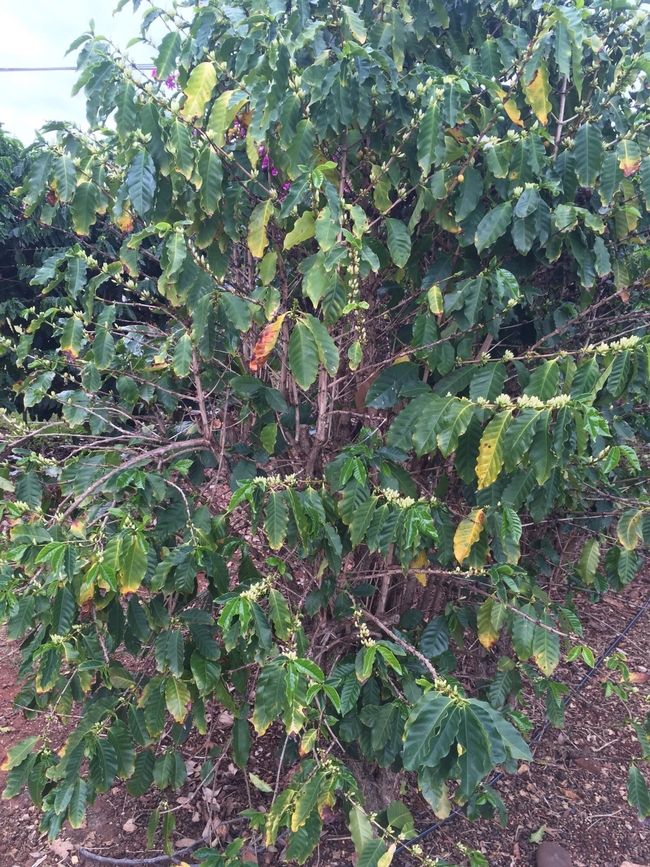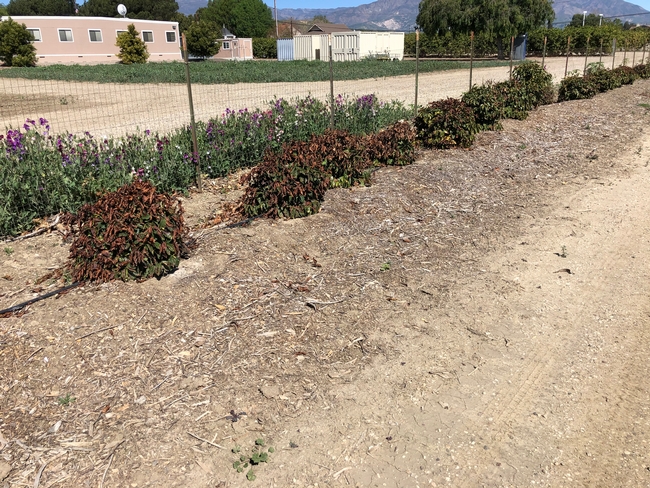
Learning Coffee
Who a thunk it, but coffee can grow in coastal California, because our latitude approximates the climate found in high altitude coffee growing areas found in Central America. And now there is a "small" industry growing here. Along the coast from San Luis Obispo to San Diego, there are probably 50 growers with more than 100 plants. The largest with about 5 acres and rumors of someone putting in a much larger planting of 20 acres. Keep your eye open for other plantings going in.
Of all coffee species, Coffea arabica is considered to make the superior beverage. It accounts for more than three-quarters of the world production in spite of being prone to a devastating rust disease. C. arabica is indigenous primarily to the area around Kaffa in Ethiopia. For many years, this area was "closed", and the genetic breeding pool was limited to one seedling taken to Amsterdam in 1706 from a planting in the East Indies. The resultant inbreeding still may be a significant factor in what cultivars are presently available.
The first "coffee" drink was made from fermented fruit pulp. Not until the 15th century were dried "coffee" beans roasted, ground and a beverage extracted. In 1650 coffee from Arabia reached England, and by 1675 there were more than 3,000 forerunners of StarbucksTM.
C. arabica thrives and produces the most prized beans in the moderate (maximum of about 70o F) climates encountered at higher, frost-free elevations. Excellent coffee is produced near the equator up to 6000 feet. Growing conditions at this elevation correspond approximately to the coastal conditions at 34 degrees latitude (Santa Barbara and Ventura Counties). A good tasting coffee has been made from beans grown in Santa Barbara backyards.
Challenges facing production in California include adapting cultural techniques to California conditions, marketing California specialty coffees, and minimizing labor costs attendant with picking and grading without significantly degrading product quality.
We are still learning how to grow coffee and what conditions it likes. We know it doesn't like 115 deg. The following pictures are of coffee that survived two summer renditions that whacked avocados, citrus and even eucalyptus.
Coffee Heat Stressed in summer 2020
In the last weeks of February and early week of March 2022, we had temperatures that hovered around 33/35 degrees at night and one night dropped to 30 deg in Santa Paula where we have a planting. It toasted the tops of the plants, but they survived and will likely grow out of the damage. It will be interesting to see if they flower in the next month or so. Probably not, since a lot of the terminals were burned. A much larger planting in Santa Paula on a hillside escaped much of this cold damage.
Lots to learn yet.
Nine varieties of coffee, all neatly cold scorched in Santa Paula, March 2022



